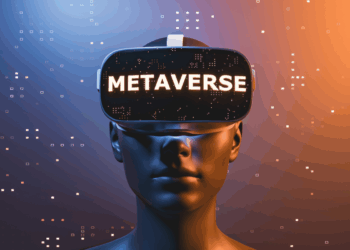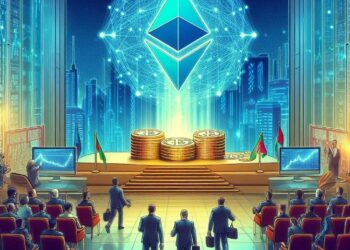The global generation known as Generation Z (typically those born between the mid-1990s and the early 2010s) stands at a pivotal intersection of digital fluency and inherent skepticism toward centralized institutions. Unlike their predecessors, Gen Z grew up immersed in the digital economy, witnessing the data breaches, corporate overreach, and centralization of power inherent in Web 2.0 giants (Google, Facebook, Amazon). This unique socio-digital perspective has fueled their overwhelming interest in Decentralized Applications (DApps)—software built on blockchain technology that operates without a single point of control. Their engagement isn’t just a trend; it’s a profound cultural and economic realignment toward digital sovereignty and trustless systems.
The Cultural Shift Driving DApp Adoption

The Core Principles Attracting Young Users
Gen Z’s embrace of DApps is fundamentally driven by a set of ethical and functional principles that Web 2.0 failed to deliver:
A. Data Ownership and Privacy: Gen Z is acutely aware of how their data is exploited by centralized platforms. DApps, often coupled with self-custody wallets and verifiable identity, offer a path to owning and controlling their personal information, making them stakeholders, not just products.
B. Financial Inclusion and Access: Traditional finance (TradFi) can be exclusionary, especially for younger demographics with limited assets. Decentralized Finance (DeFi) DApps provide instant, permissionless access to sophisticated financial tools like lending, borrowing, and high-yield savings, democratizing wealth-building.
C. Transparency and Immutability: The inherent nature of the blockchain provides auditable proof of transactions and rules. This transparency contrasts sharply with the “black box” algorithms and opaque decision-making of centralized social media and financial platforms, appealing to a generation that values authenticity.
D. Creator Economy Monetization: Gen Z are major content creators. DApps, particularly those utilizing Non-Fungible Tokens (NFTs), offer direct, disintermediated paths to monetize their work, ensuring a higher cut of revenue and verifiable ownership, bypassing traditional agents or platform fees.
Sector-Specific DApp Growth Fueled by Gen Z
The enthusiasm for DApps is not uniform; it is concentrated in specific sectors that align with Gen Z’s lifestyle and values, demonstrating early success and robust financial activity.
1. Decentralized Finance (DeFi) Applications
DeFi DApps are revolutionizing how Gen Z manages, invests, and interacts with money, offering alternatives to traditional banking.
A. Yield Generation and Staking: Platforms like Aave and Compound allow users to lend and borrow crypto assets without intermediaries. Gen Z, highly active in the crypto space, use these DApps to earn passive income (yield) on their holdings, effectively serving as their own decentralized banks.
B. Decentralized Exchanges (DEXs): DApps such as Uniswap and SushiSwap enable peer-to-peer cryptocurrency trading directly from a user’s wallet. This appeals to Gen Z’s anti-centralization sentiment, as it bypasses large, regulated, and often fee-heavy centralized exchanges (CEXs).
C. Perpetual Decentralized Autonomous Organizations (DAOs): Many DeFi protocols are governed by DAOs, where token holders (many of whom are young investors) vote on platform changes. This participatory governance model aligns with Gen Z’s desire for community involvement and having a direct say in the infrastructure they use.
2. Gaming and Entertainment (GameFi)
The intersection of decentralized finance and gaming, known as GameFi, has become arguably the largest entry point for Gen Z into the DApp ecosystem.
A. Play-to-Earn (P2E) Models: Games like Axie Infinity and Splinterlands reward players with tradable cryptocurrency and NFTs for in-game achievements. For young people, particularly in developing economies, this has become a viable, often primary, source of income, fusing recreation with economics.
B. True Digital Asset Ownership: In contrast to traditional games where purchased skins or items are locked to the platform, DApps utilize NFTs, meaning Gen Z players own their in-game assets. They can sell them on external marketplaces, transfer them, or even use them in other virtual worlds (interoperability).
C. Metaverse and Virtual Worlds: Platforms such as Decentraland and The Sandbox are DApps that sell virtual land as NFTs. Gen Z is actively involved as virtual architects, event organizers, and content creators within these persistent digital spaces, creating their own micro-economies.
3. Social and Identity DApps
The quest for a more authentic and private digital identity is driving Gen Z toward social DApps.
A. Decentralized Social Networks (DeSo): Platforms built on protocols like Lens Protocol aim to give users ownership over their social graph and content. If a user decides to leave one DeSo DApp, they can take their followers, posts, and identity with them, eliminating platform lock-in.
B. Soulbound Tokens (SBTs) and Verifiable Credentials: These non-transferable NFTs are being explored as a method for Gen Z to digitally prove non-financial attributes, such as educational degrees, voting history, or reputation scores, without relying on a central authority (like a university or government agency).
C. Content Curation and Discovery: DApps are experimenting with decentralized curation models where users are rewarded for finding and promoting quality content, offering an escape from the centralized, often manipulative, algorithms of platforms like TikTok or Instagram.
Technical and Philosophical Underpinnings

Understanding Gen Z’s affinity requires a look at the technical shift from Web 2.0 to Web3 and the subsequent philosophical advantages offered by DApps.
A. The Evolution from Centralized to Decentralized Systems
The move to DApps represents a significant architectural transformation:
A. Monolithic Backend to Distributed Ledger: DApps replace centralized databases (controlled by corporations) with a distributed ledger (blockchain) validated by a global network of independent nodes. This eliminates the single point of failure and censorship.
B. Opaque Code to Open-Source Smart Contracts: The operational logic of DApps is often governed by smart contracts—self-executing code stored on the blockchain. These contracts are typically public (open-source), allowing Gen Z developers and users to verify the rules and functionality before interacting.
C. Platform Intermediaries to Peer-to-Peer (P2P): DApps facilitate direct interaction between users (e.g., borrower to lender, artist to collector) without requiring a profit-taking intermediary, maximizing efficiency and minimizing cost.
B. The Role of User Experience (UX) and Accessibility
Early DApps were notoriously complex. The current boom, however, is being driven by vast improvements in UX:
A. Simplified Onboarding with Wallet Providers: Modern crypto wallets (like MetaMask, Rainbow, or embedded Web3 wallets) are becoming more intuitive, bridging the gap between traditional applications and decentralized interfaces. This ease of entry is crucial for attracting mass-market Gen Z users.
B. Mobile-First and Cross-Platform Design: Recognizing Gen Z’s dependence on mobile devices, developers are prioritizing slick, mobile-friendly DApp interfaces and Layer-2 scaling solutions that offer faster, cheaper transactions, making everyday DApp use practical.
C. Gamification of Finance: Many DeFi and NFT platforms are adopting game-like elements, using rewards, milestones, and visual aesthetics to make complex financial concepts engaging and accessible to a younger, digitally native audience.
Challenges and Future Trajectory
While Gen Z’s embrace of DApps is accelerating the Web3 movement, significant challenges must be overcome for widespread, sustained adoption.
A. Scalability and Transaction Costs
The major obstacle remains the underlying blockchain infrastructure’s ability to handle massive traffic.
A. High Gas Fees: During periods of high network congestion, transaction costs (gas fees) on older chains like Ethereum can be prohibitively high, making micro-transactions and low-value P2E activities uneconomical for young users.
B. Latency and Speed: DApp interactions, particularly in GameFi, require quick confirmations. Slow block times can ruin the user experience, making faster, more scalable networks (Layer-2s like Arbitrum or Optimism, or alternative Layer-1s like Solana or Avalanche) essential for Gen Z adoption.
C. Interoperability Standards: Currently, many DApps operate in silos on their respective blockchains. True global adoption requires established standards that allow Gen Z to seamlessly transfer assets and identities between different ecosystems.
B. Education, Security, and Risk Management
The decentralized nature of DApps places significant responsibility on the user, posing a risk to the financially inexperienced Gen Z.
A. Self-Custody Risks: With DApps, Gen Z must manage their own private keys. Loss of a key means permanent loss of funds—a stark contrast to centralized systems where passwords can be reset. Education on key security is paramount.
B. Smart Contract Vulnerabilities: While transparent, smart contracts can have bugs or exploits. Young users often lack the technical expertise to assess a DApp’s security, making them vulnerable to “rug pulls” and hacks in un-audited projects.
C. Regulatory Uncertainty: Governments are struggling to classify and regulate DApps and crypto assets. Sudden regulatory crackdowns or unclear legal definitions could disrupt the ecosystem and deter even digitally native users.
Conclusion
Gen Z’s affinity for Decentralized Applications is more than a preference for new technology; it is a declaration of independence from the centralized, data-exploiting, and financially exclusionary models of the past two decades. This generation, the first true digital natives, values transparency, control, and authenticity above all else, making the principles of blockchain and decentralization perfectly aligned with their worldview.
The impact of this adoption is profound. By choosing DeFi over TradFi, GameFi over traditional gaming, and DeSo over centralized social media, Gen Z is actively directing the flow of capital and the development priorities of the entire Web3 ecosystem. They are the critical mass needed to validate the DApp concept, moving it from a niche technical experiment into a global, viable economic infrastructure. Their engagement provides the liquidity, the testing ground, and the social proof that encourages major institutional and corporate players to enter the space. Their preference for permissionless systems is forcing traditional finance and tech giants to rapidly innovate and decentralize their own offerings.
Crucially, Gen Z views the digital economy not as a supplement to the physical world, but as a fully realized parallel economy where time spent equals tangible value. The P2E model is a powerful illustration of this, converting leisure time into income, blurring the lines between work and play. As user experience continues to smooth out, as Layer-2 solutions solve the remaining scalability issues, and as educational resources empower them to navigate the inherent risks of self-custody, Gen Z will solidify its role as the architects and primary inhabitants of the next iteration of the internet. Their current love for DApps is simply the opening act for a long-term, irreversible shift toward a more decentralized, equitable, and user-governed digital future. This generation isn’t just using the new internet; they are building it with their keystrokes, their investments, and their decentralized votes, ensuring the Web3 economy is robust, participatory, and unstoppable.












